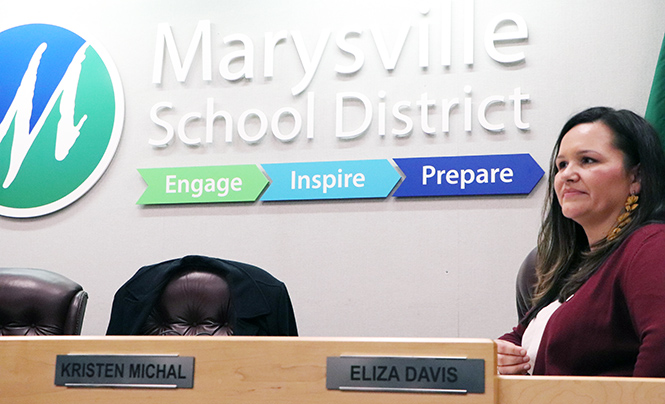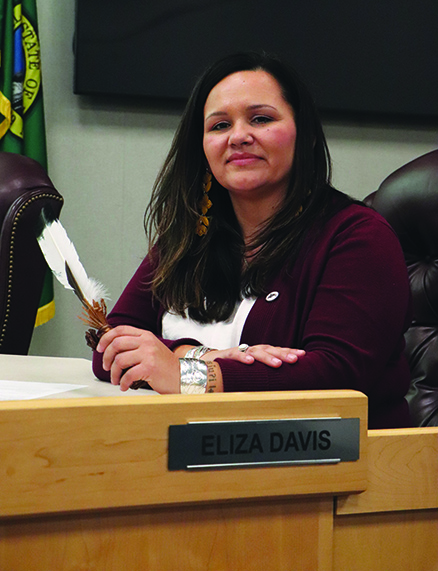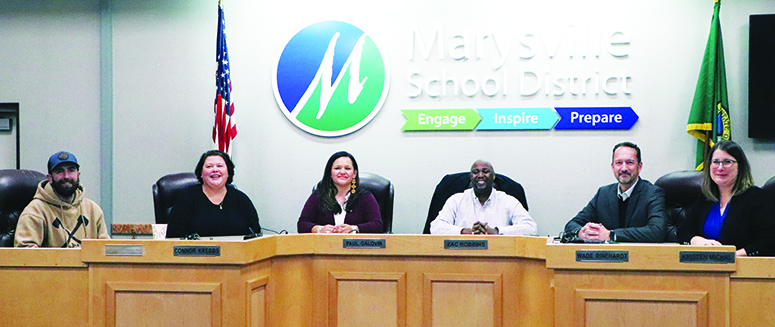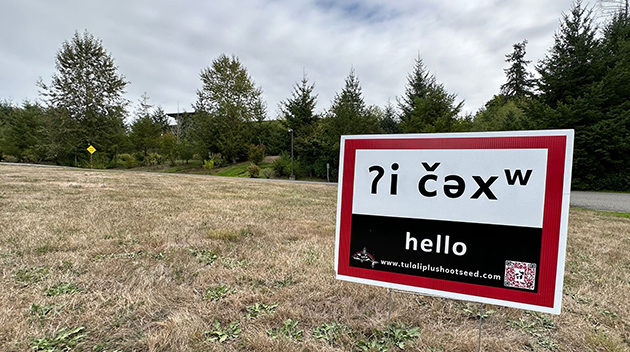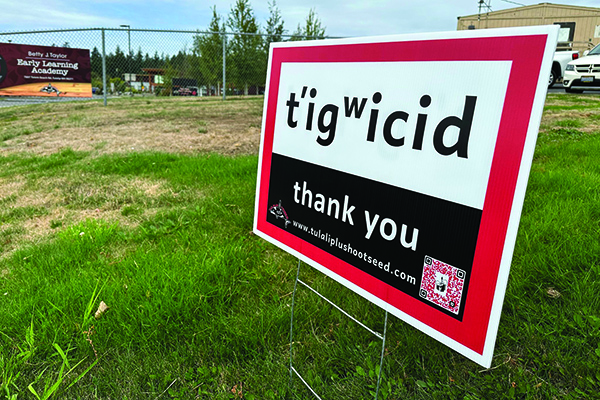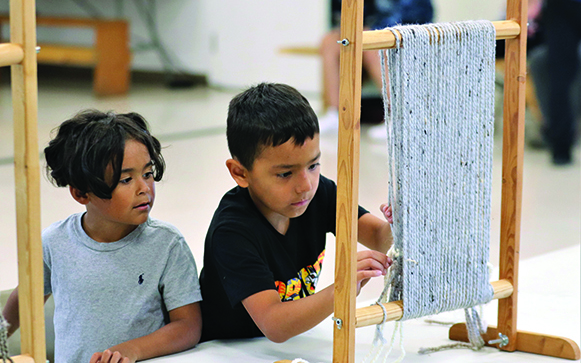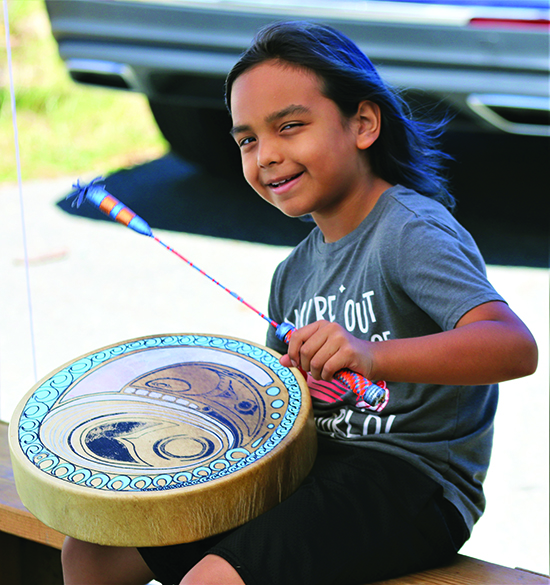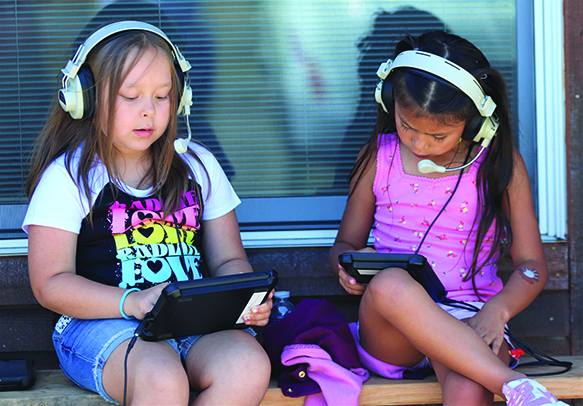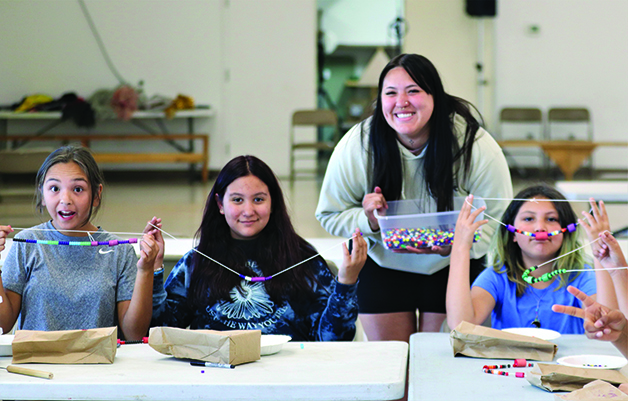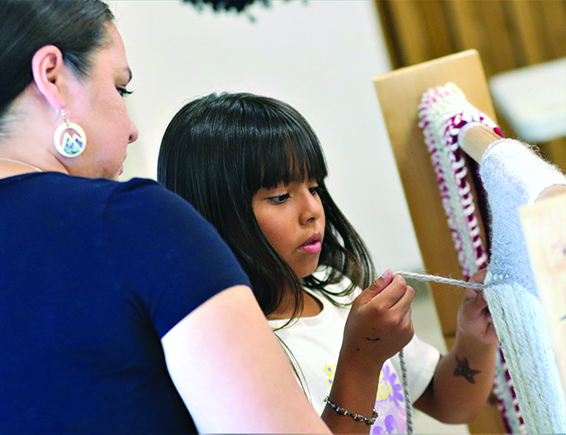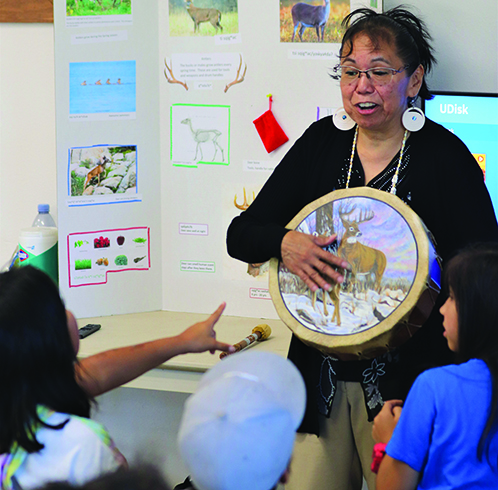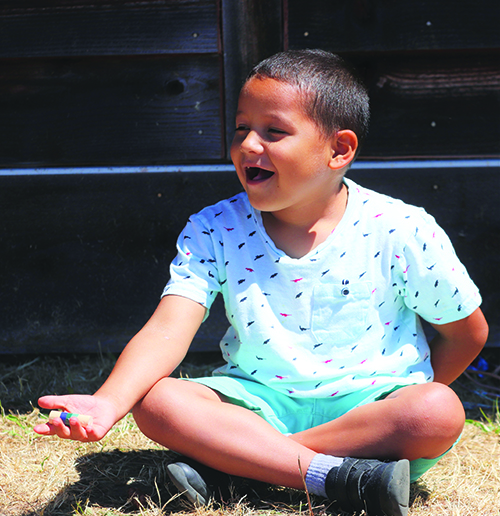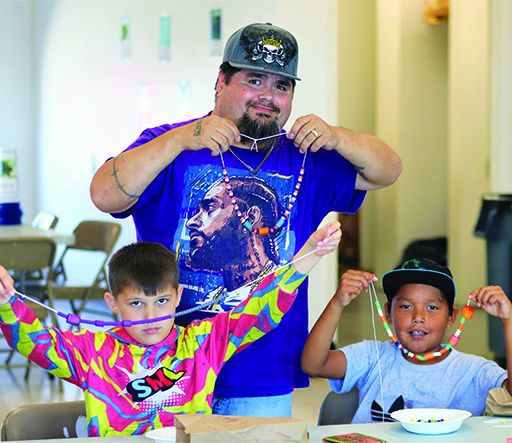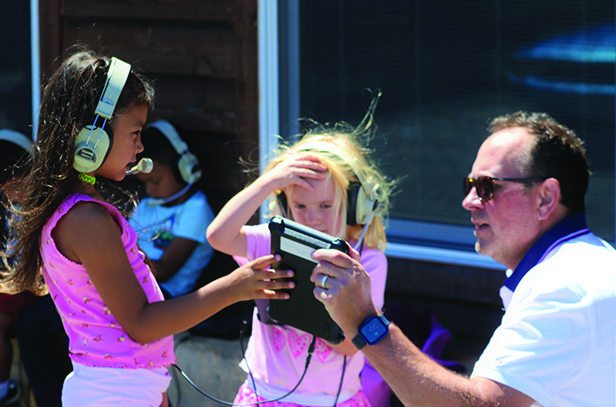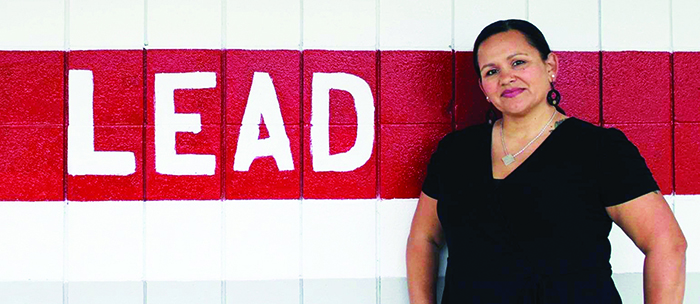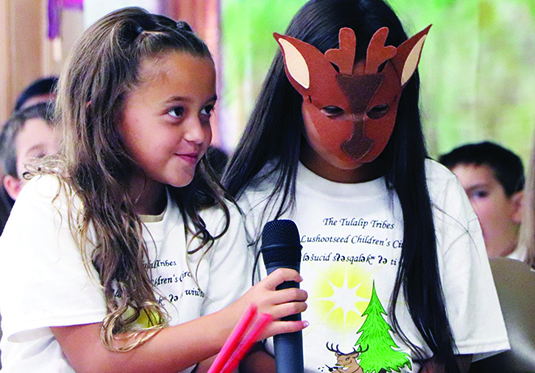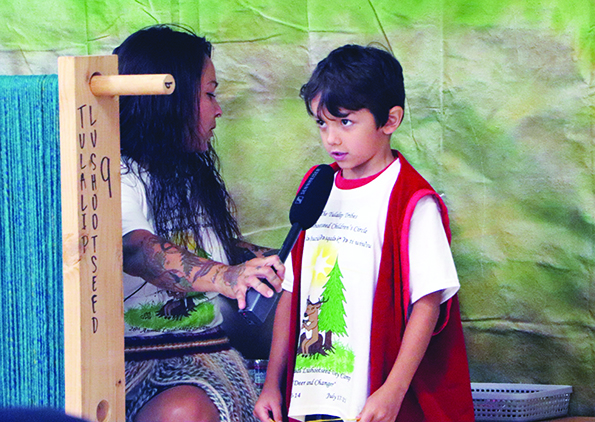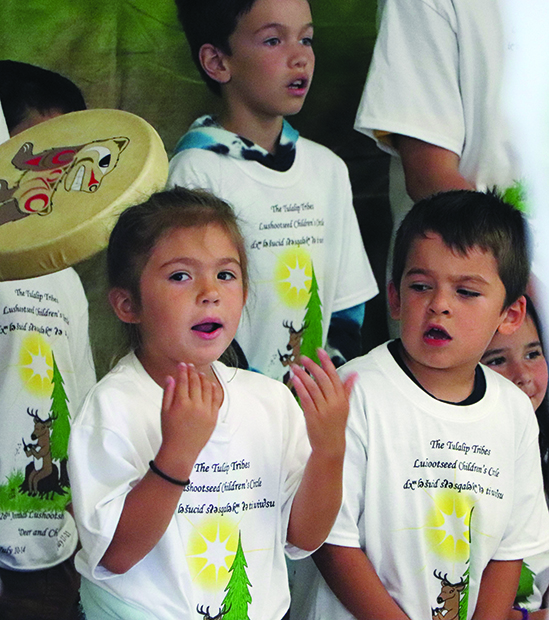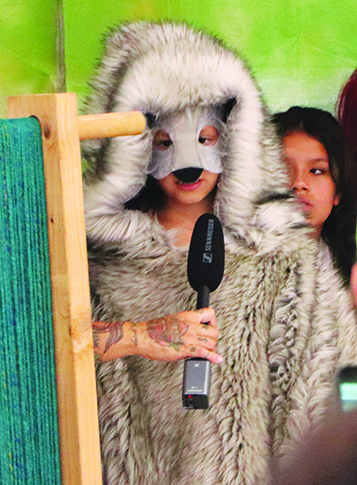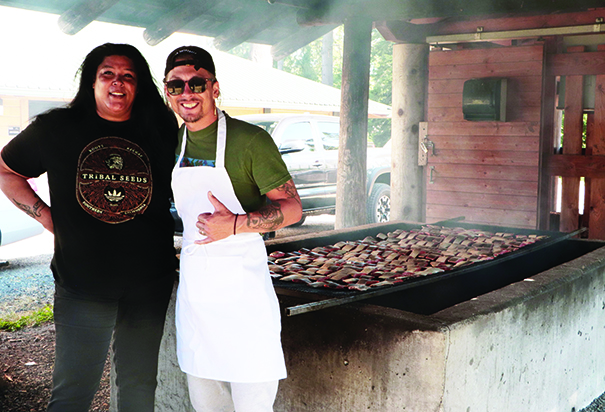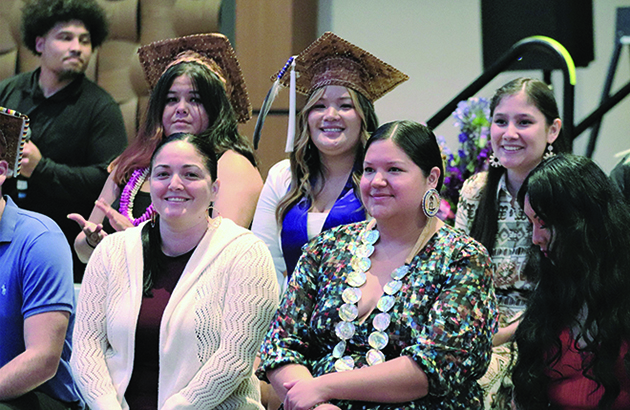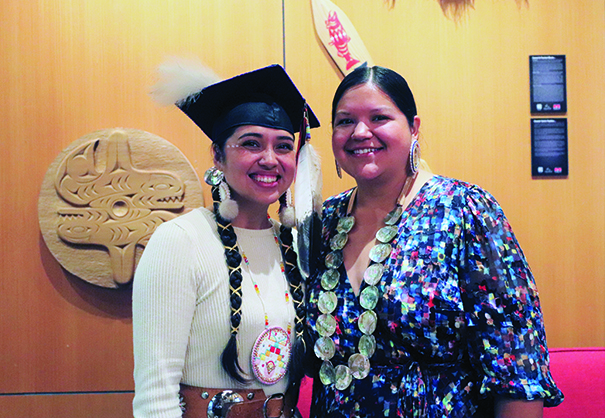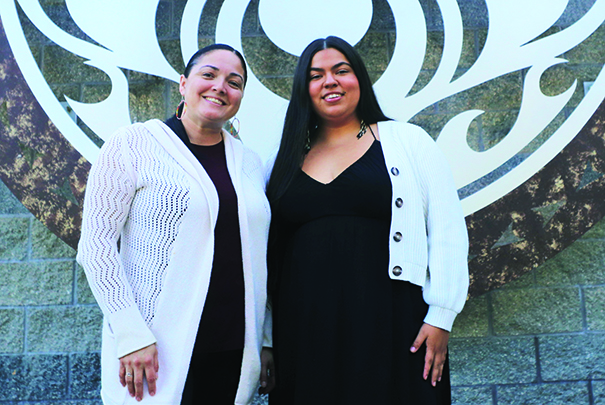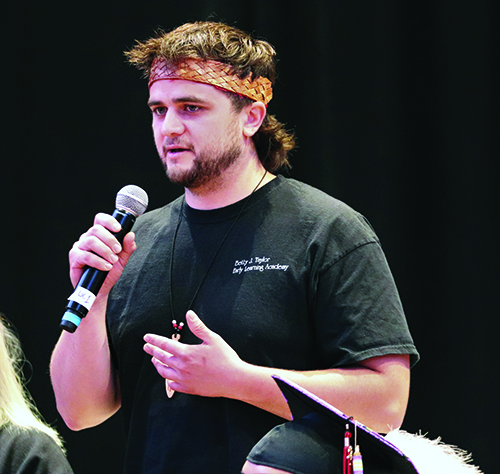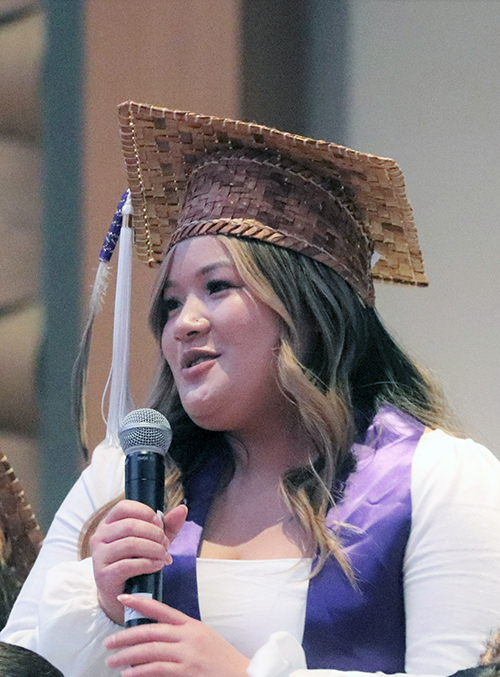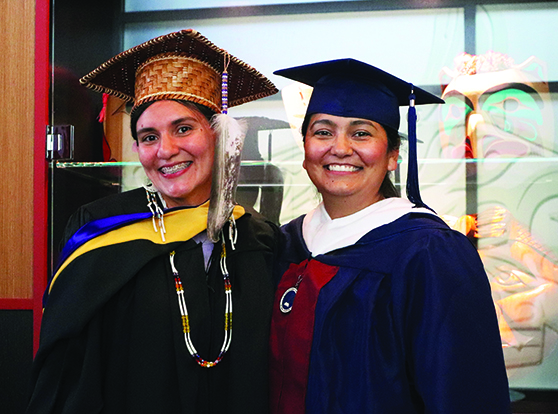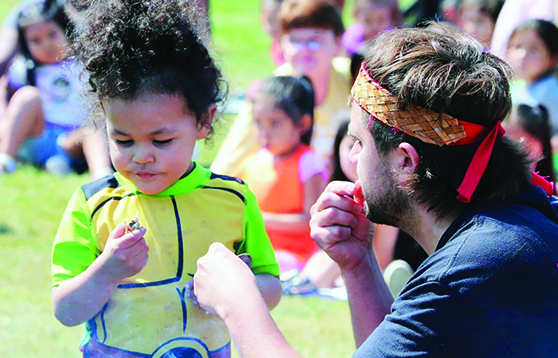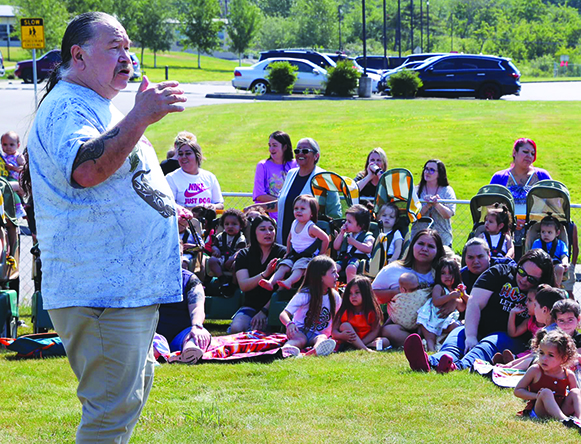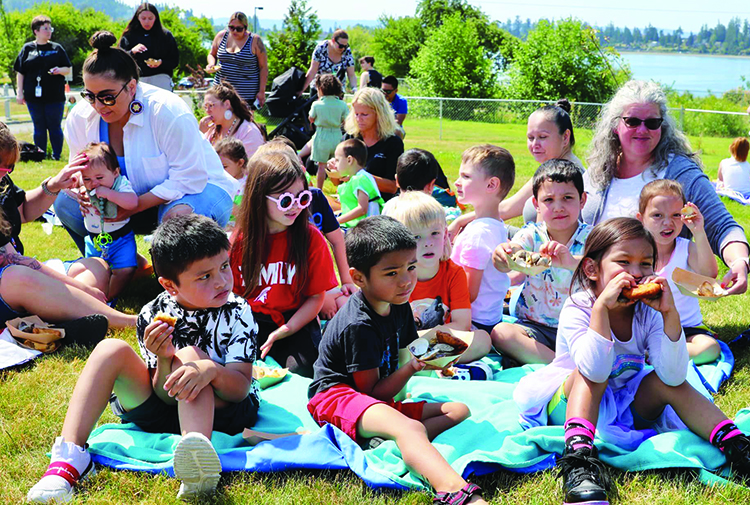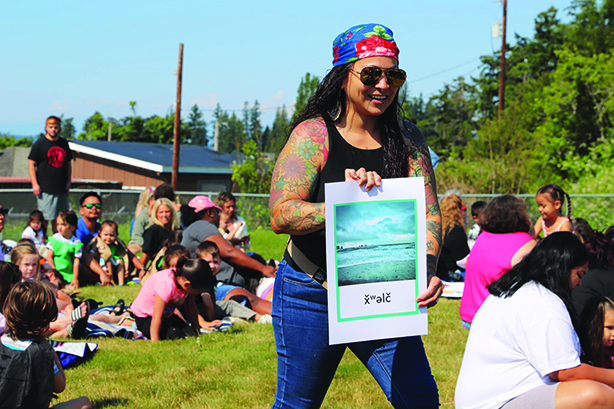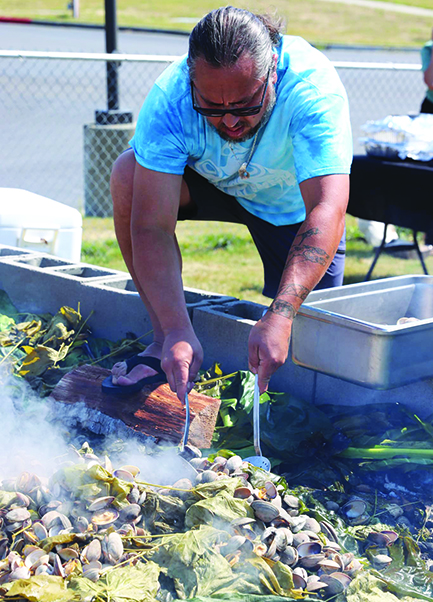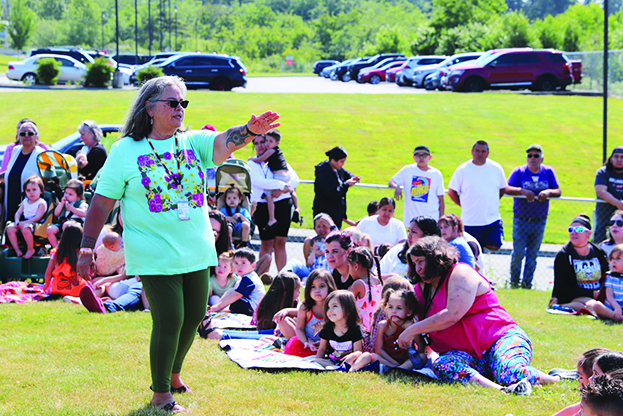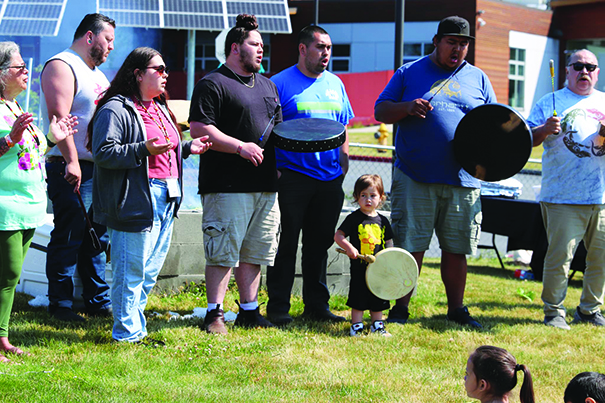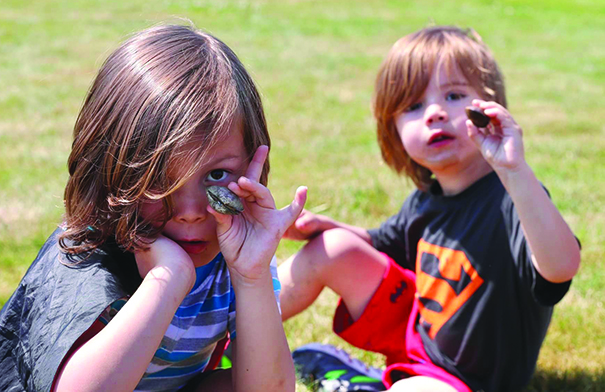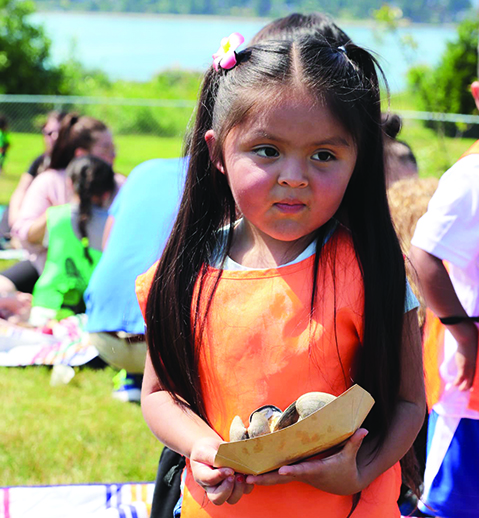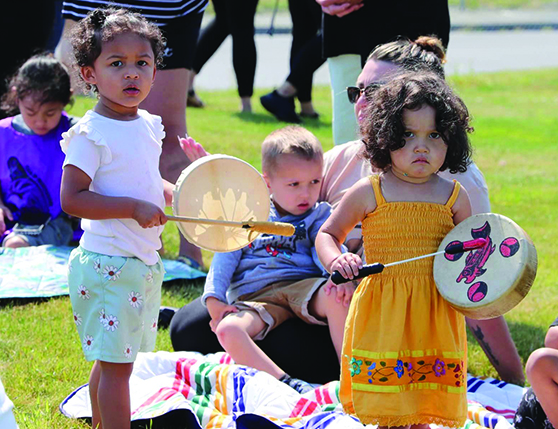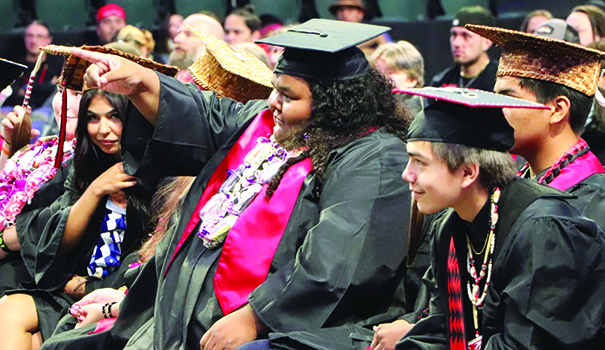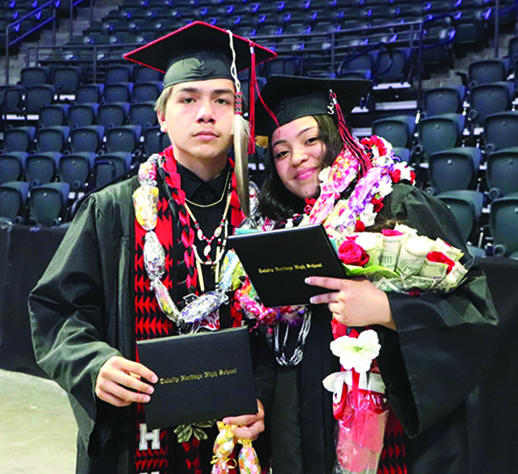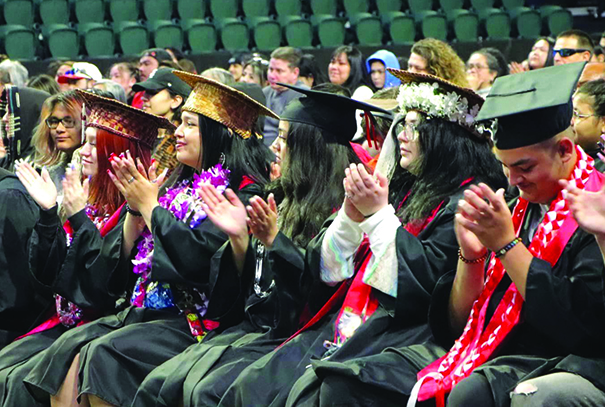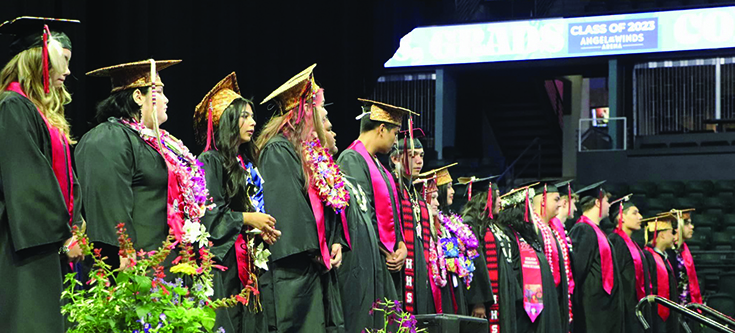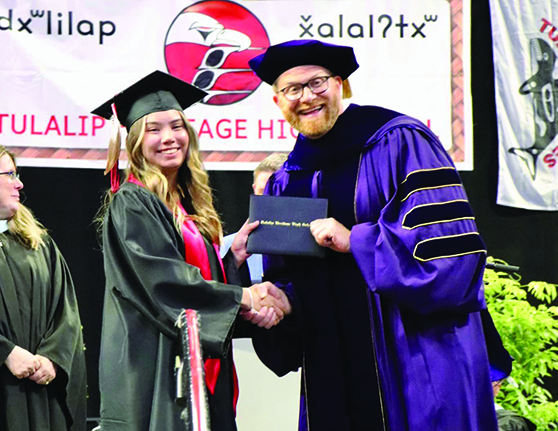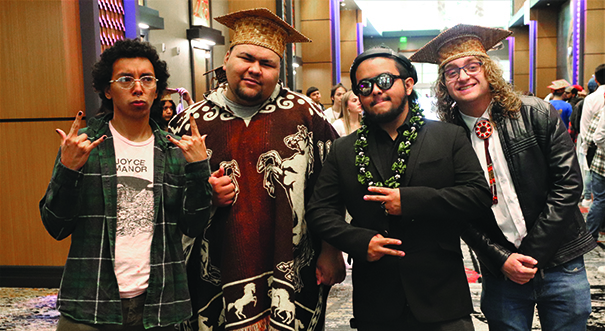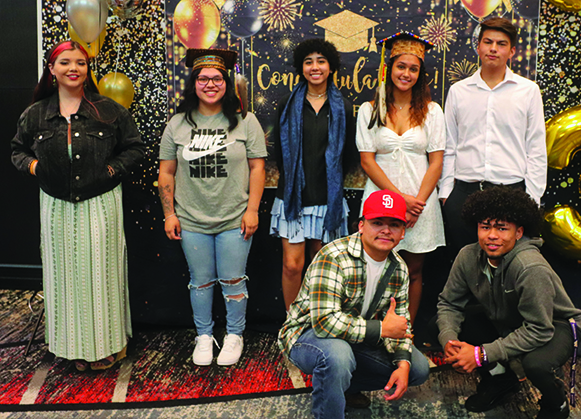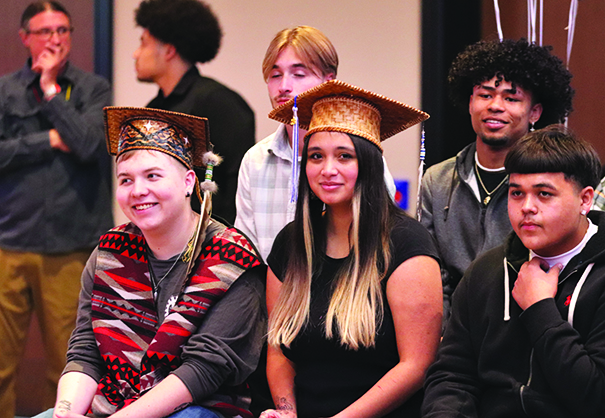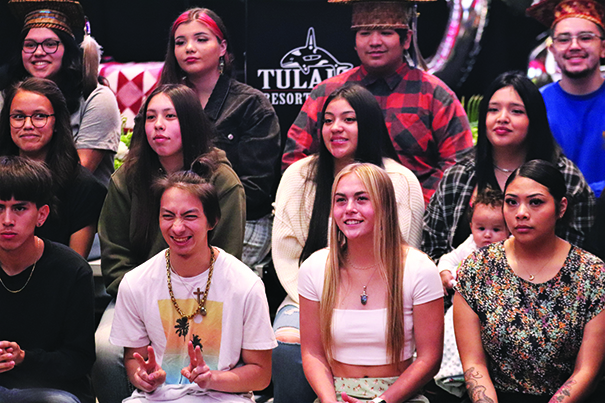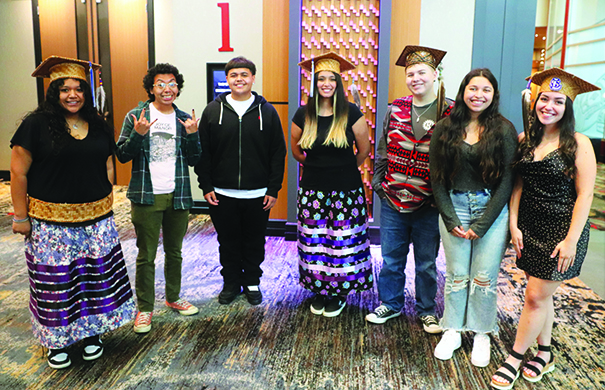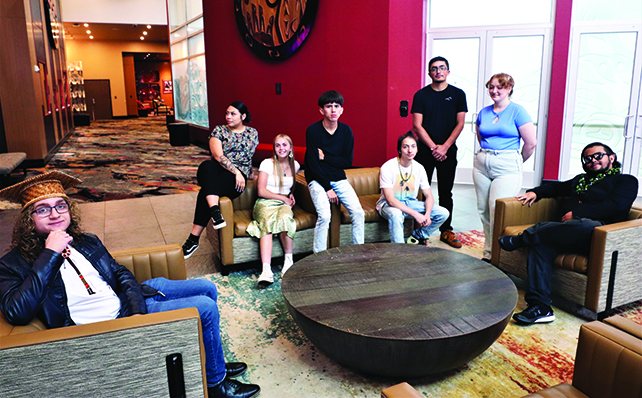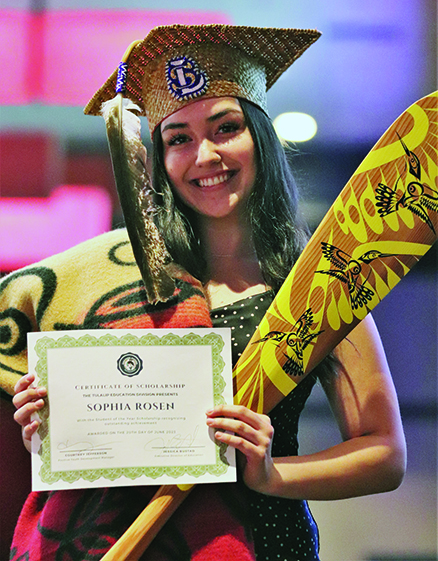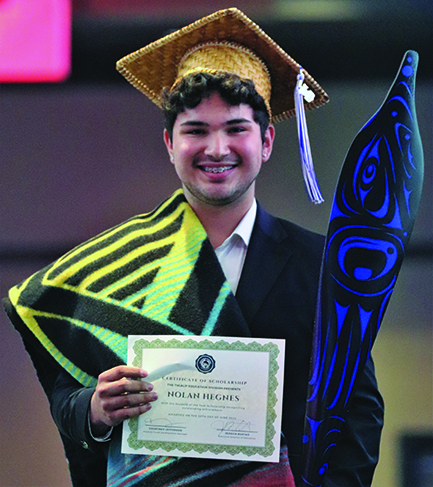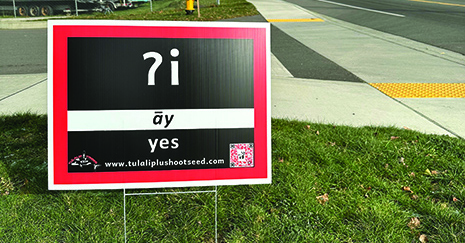
By Kalvin Valdillez, Tulalip News
“This is who we are and where we come from. Lushootseed is part of our culture, and we should be able to embrace it and share it with everyone,” expressed Lushootseed Language Warrior Michelle Myles. “It’s awakening the language. This initiative is keeping it awake, spreading it, and sharing it with everyone.”
Last September, the Tulalip Lushootseed language department embarked on an initiative that challenged the community to incorporate three words into their everyday vernacular: ʔi čəxʷ, t’igʷicid, and huyʔ, which translates to hello, thank you, and goodbye in English.
For decades, the language department has done amazing work at both recovering the traditional sduhubš language and sharing that knowledge with the tribal community. With established partnerships with the Betty J. Early Learning Academy and the Marysville School District, the language department introduces Lushootseed to their membership at a young age, setting a strong foundation to build upon. As students progress through their academic career, Lushootseed courses are readily available, from pre-k all the way through college, for those who wish to sharpen their traditional linguistics and be a part of the language revitalization movement happening at Tulalip.
In the past, the department has come up with some impressive and innovative ideas to help spread the language community-wide. For example, the department regularly holds classes for the adults of the community and employees of the Tribe. They also host storytelling get-togethers aimed at getting the entire family unit speaking Lushootseed with each other. And on top of all of that, they developed an interactive, informative, and easy to navigate database that is jampacked with Lushootseed knowledge including the visual and audio pronunciations of hundreds of words and phrases.

What was nearly lost to assimilation efforts in the 1900’s is flourishing in 2024 thanks to the dedication and love that each Lushootseed warrior has for their ancestral language. Thanks to their hard work, it is nearly as common to hear a toddler speaking Lushootseed phrases as it is to hear a Tulalip elder speaking the same language.
That being said, there are still numerous tribal members who are not quite as acquainted with the language as they’d like to be. There are several non-Natives, or other tribal members, throughout the reservation who would like to learn and utilize the language of the sduhubš as a sign of respect to the original inhabitants of this region.
This initiative is the perfect place to start for newbies to the language. The idea is that by replacing three English words with their Lushootseed counterparts during your everyday conversations, you are more likely to grasp the meaning and pronunciation of the word. You’ll be all the more encouraged to use the phrases throughout your day; and every time you speak the language, you share it and inspire others to participate in the initiative.
Known both as the Awakening the Language initiative or the three-phrase challenge, the project introduces three words and/or phrases to the community at a time. Throughout the fall and early winter season, the people became familiar with ʔi čəxʷ, t’igʷicid, and huyʔ. Many incorporated the phrases into their e-mails and professional interactions as soon as the initiative was announced.
To keep the project fresh in everybody’s minds, the language department posted yard signs throughout the reservation, in highly visible areas, that displayed the Lushootseed words for hello, thank you, and goodbye. At the bottom of each yard sign were QR codes that the passengers of moving vehicles or those out for a walk could capture with their phone cameras. The QR code led them to the Tulalip Lushootseed website where they could learn more about the initiative and hear the pronunciation of each word. The signs did exactly what they were intended to – get the people talking.
After the community spent close to four months with those initial phrases, the Lushootseed department introduced three new words to the people earlier this month. And if it ain’t broke, no need to fix it! The department is taking the same approach that was successful last fall. New signs are already posted all across the village in various neighborhoods and along high-traffic roadways. The new words areare ʔi (yes), xʷiʔ (no), and haʔɬ dadatu (good morning).
Brian Berry, the language department’s video producer/director, was instrumental in this getting this project started. He shared, “These are three things that everyone can say. It actually started here at the Lushootseed department. There are some signs here in the building that say, ‘English words we’re not going to use anymore’. That kind of got my brain spinning that we, as employees and tribal members, should replace these three phrases, using the Lushootseed ones instead of the English ones – just trying to get everyone to speak the language.”
This go-round we get a bonus word as red octagon signs, with the word gʷəƛ̕əlad, have been placed underneath stop signs all around Tulalip as well. Given it’s placement and shape, one could easily surmise they are Lushootseed stop signs, which is incredibly creative and entices people to learn the Lushootseed pronunciation of the word stop as soon as possible. And like the signs from the three-phrase challenge, the gʷəƛ̕əlad sign also has a QR code that people can follow to hear that pronunciation.
As soon as the signs were posted, we shared an image of a gʷəƛ̕əlad sign to our Tulalip News Facebook which was met with great reception and many praised Tulalip for preserving their language and making it accessible to their people.
Said Michelle, “This was something fresh we could work on to get the community speaking the language. We were looking for ways to get the language out there to share it, where it’s not in the classroom, not with a teacher, and it’s something you could use with family members and share it in that way.”
For more information about the initiative, the three phrases and how you can help spread the ancestral word, please visit www.TulalipLushootseed.com
